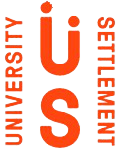Download a copy of this testimony
Testimony of University Settlement before the New York City Council
Oversight Hearing on “$78.34 Billion:
NYCHA’s Physical Needs Assessment”
Committee on Public Housing, Chair Alexa Avilés
Submitted by Gary Adams,
Cornerstones Program Director,
University Settlement
September 22, 2024
Chair Avilés and members of the committee, thank you for the opportunity to testify. My name is Gary Adams, and I am University Settlement’s Cornerstones Program Director at Campos Plaza. We would like to offer our perspective as organizers of programming in NYCHA community centers.
We urge NYCHA to work with tenants to ensure the timely repairs of their residences. Every year, University Settlement partners with 40,000 New Yorkers in Lower Manhattan and Brooklyn through programming for all ages. We are acutely aware of the importance of having a safe living environment that feels like home to the physical and mental health of our community members. And we know that if we are struggling with repairs issues, that NYCHA residents are living with similar issues and more.
University Settlement runs three Cornerstones: my program in Manhattan, and two in Brooklyn at Ingersoll and Atlantic Terminal. Campos Plaza serves roughly 250 neighbors in afterschool, middle school, teen, adult and senior programs.
First, we are calling on NYCHA to repair infrastructure issues in tenant apartments. Because we work within communities, we know that residents are living with backed up sewage issues, mold in bathrooms and throughout apartments, broken elevators making it impossible for our elders on higher floors to leave them homes, a lack of heat in the winter, and pest issues unsanitary for anyone to live in. Second, we are eager to partner with NYCHA to effectively respond to the physical needs of our community centers. Our neighbors living in NYCHA deserve safe living conditions at home and safe conditions in their community centers, which often go together.
Currently, our physical needs at Campos are not merely cosmetic, and we have unfortunately been struggling with the same issues for eight years. They reflect health and safety concerns, and therefore have the potential to hamper our programming. As the health and safety of our participants is our foremost concern, we must have these needs addressed to provide safe programming for our NYCHA neighbors and the community.
Current Campos Plaza issues include leaks in classrooms and hallways; a lack of hot water in bathroom faucets; bathroom stall doors that do not open or close properly; pest problems’, and exterior doors that are difficult to open, which can be an evacuation concern. Some of these issues could prevent us from getting our School Age Child Care license (SACC), which could shut down programming for our participants.
I know that these infrastructure issues extend to other Cornerstones as well, including our Brooklyn ones, where there are health and safety issues that have remained unresolved for upwards of five years.
At Ingersoll, we have pressing HVAC concerns that demand immediate attention. The heating and cooling systems within the facility remain unreliable, consistently leading to rooms that are too cold or too hot for children to use them safely..
At Atlantic Terminal, we continue to have an unresolved roofing problem, and we have no update on how and when this will be fixed. Additionally, the state of the kitchen, specifically the stove, is gravely affected by continuous leaks, making it impossible to utilize the space for crucial activities such as meal programs, post-school warm-ups, and a range of community outreach events and programs that rely on a fully operational kitchen. Regrettably, this predicament has also endured for approximately five years, with no tangible solutions in sight.
As community partners, we look forward to partnering with NYCHA to support addressing infrastructure issues in the building to provide the safest environment for our neighbors, both in their homes and in the community centers that bring them together.
Thank you for your time.

